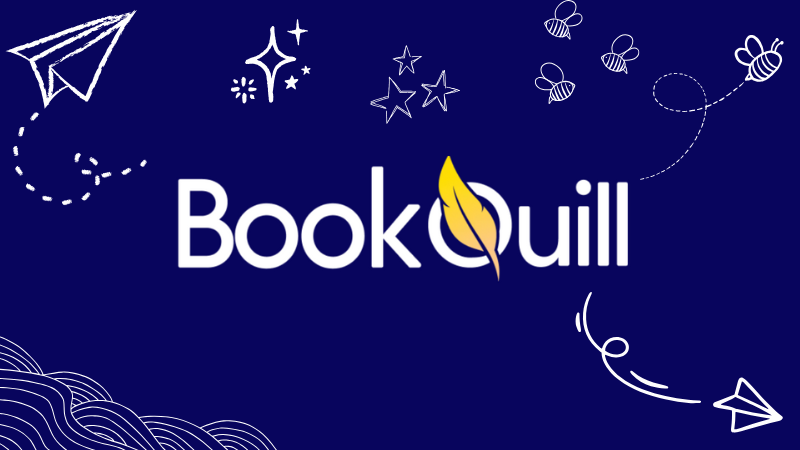Let me hit you with a quick history lesson. If there’s one thing humanity should’ve figured out by now, it’s this: those who don’t evolve get wiped off the board.
Extinction doesn’t knock—it kicks the door down.
To stay at the top of the food chain, you’ve got to stay in learning mode—always. Trends come and go, whether we’re talking self-publishing, book marketing, or the craft of writing itself. The authors who stick around? They’re not the ones who wrote one good book and vanished. They’re the ones who kept adapting, sharpening their game, and leveling up.
In this guide, I’m handing you the latest, battle-tested self-publishing checklist. Everything you need to tick off before you smash that Publish button on Kindle.
Polish the Product – Your Manuscript Isn’t Ready Yet
Before anything goes live, it needs to be perfect. Your manuscript isn’t a fragile little flower—it’s your weapon. But right now? It’s blunt. So, sharpen it. Ruthlessly.
Edit Like a Maniac
First drafts are like bland, unseasoned steak—no butter, no salt, no herbs. Just chewy disappointment. They’re bloated with filler, tangled story arcs, no chronological order, and dialogue that sounds like it came straight out of a soap opera audition.
Before you even think about publishing, editing should be priority number one. Go at it like there’s no tomorrow. Hunt down every grammar glitch, awkward sentence, plot hole, and pacing stumble. Cut the fluff. Rewrite every scene that feels even slightly off.
And if you’re too deep in your own words to see the flaws? Get a second pair of eyes. Better yet, find affordable eBook writing services that know what they’re doing. Many ghostwriters and book services offer pro-level editing that can whip your manuscript into shape—fast. Don’t skip this. Readers will notice if you do.
Hire a Pro (Seriously)
When you write something, you build a deep sense of attachment to it—it’s your creation, your blood on the page. And because of that bond, you’re probably blind to some of its flaws.
That’s not weakness. That’s human.
That’s why this self-publishing checklist includes one non-negotiable: hire a pro.
Look for affordable and professional book editing services that will tear your manuscript apart and stitch it back together with more precision than you ever could alone. They’ve got the experience, the detachment, and the brutal honesty your book needs.
No hard feelings—just hard truth.
Dress It Up – Cover & Formatting
Cover That Commands Attention
Listen, man—people always judge. That old line, “Don’t judge a book by its cover,” sounds nice in a philosophy class, but out here in the real world? People develop your books first impression by looking at the cover. Your cover is your first impression, and it better be loud enough to stop a scroll in its tracks.
Make sure your book cover speaks volumes. It should scream your genre, spark curiosity, and look sharp—even as a tiny thumbnail. Add this to your self-publishing checklist right now: your cover has to do the heavy lifting.
As for DIY covers? Let’s be honest—they rarely turn heads. Unless you’re a trained designer with marketing chops, you’re better off leaving it to the pros. I suggest tapping into premium book writing help services—they’re not just design experts, they’re time-savers. Instead of wasting hours fumbling with Canva templates, you get a pro-level cover that actually sells.
Interior Layout That Doesn’t Suck
Formatting issues are the potholes of the reading journey—jarring, annoying, and completely avoidable. Weird line breaks, mismatched fonts, inconsistent spacing, awkward margins… it all screams one thing: amateur hour.
Use tools like Vellum, Atticus, or bring in a pro custom book writing service.
Your goal? A clean, seamless reading experience that fades into the background and lets the story do the talking. If the reader notices your formatting, you’ve already lost their focus.
Metadata Mastery – The Hidden Weapons
Title, Subtitle, and Keywords That Work Overtime
When it comes to your self-publishing checklist, title, subtitle, and keywords are your top-tier discoverability weapons. Your title needs to be gripping so it immediately attract readers and forces them to pick up your book.
The subtitle? That’s your SEO goldmine. Use it wisely. Work those keywords in, but don’t make it sound like Jarvis from Iron Man wrote it. Keep it human, catchy, and relevant.
And the keywords? Think of them as your SEO GPS coordinates. If they’re off, your book will be lost in the digital void—like a lone wanderer in a desert at midnight. Choose keywords that align with your target audience.
Categories Aren’t Just Labels
When it comes to categories, they can make—or absolutely break—the path to your book’s success. These aren’t just decorative tags you slap on and hope for the best. In the self-publishing arena, categories are weapons, and they need to be dialed in with sniper precision.
Pick the right one, and you’re paving your way to the bestseller list. You’ll show up in front of the right readers, climb the ranks, and maybe even earn that coveted #1 badge. Pick the wrong one? Your book will vanish faster than Usain Bolt at the starting gun—gone before anyone even sees it.
Don’t play it safe or lazy. Dig deep into subcategories with lower competition but solid traffic. That’s how you stand out without fighting giants. This isn’t luck—it’s tactical placement. Remember, publishing isn’t roulette. It’s chess. Play smart.
Hit Publish – But Not Blindly
Last but not least, in our self-publishing checklist. You might feel like the hard work’s been done—you did everything you could. But the reality is exactly the opposite. The real work starts after hitting that publish button.
But before that, you need to set pricing. Now, if it’s too low, you risk scaring potential readers off. If it’s too low, your book will be regarded as a bargain bin item. The sweet spot for new authors is between $2.99–$4.99. Add in between and test what works best for you.
And don’t sleep on Amazon’s built-in tools. KDP Select can give you reach if exclusivity fits your play, and countdown deals or free days can supercharge visibility when timed right.
Before you even launch, line up your support squad—beta readers, ARC teams, early reviewers. Reviews are social proof, and social proof moves books. Use every tool Amazon gives you like a pro, because this isn’t a hobby—it’s a strategic campaign.
Endnote
Let’s be real—self-publishing isn’t just about slapping a manuscript on Kindle and praying for a miracle. It’s a battlefield. And like any war, you don’t win by luck—you win with preparation, precision, and persistence.
This self-publishing checklist isn’t a cute little to-do list. It’s a full-blown strategy to take your book from a raw idea to a market-ready masterpiece. From brutal edits to scroll-stopping covers, from metadata mastery to launch tactics—it’s all here. But don’t forget: the moment you hit publish is the moment the real game begins.
Stay sharp. Keep learning. Adapt fast. And above all—don’t publish blindly. You’ve got the tools. You’ve got the roadmap. Now go make some noise.
Author-to-Author: What You Need to Know
- Do I really need to hire a professional editor?
Yes. 100% yes. Your manuscript might be your baby, but it’s not perfect—and readers will notice. A professional editor brings objectivity, expertise, and the ability to turn your story into a polished, market-ready product. - Can I design my own cover if I’m on a tight budget?
You can, but should you? That’s a different story. Unless you’re a trained designer who knows genre trends, marketing principles, and how to design for thumbnails, it’s better to invest in a professional. Your cover is your book’s first impression—don’t cheap out on it. - What’s the best price to set for a first-time author?
Generally, $2.99–$4.99 hits the sweet spot. It’s affordable for readers while still giving you decent royalty returns. But the real key? Test it. Track how different prices affect sales and reader behavior.



